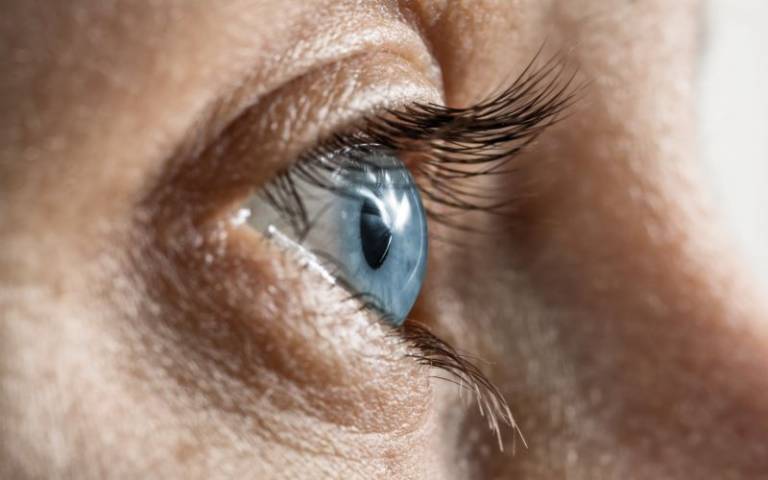Researchers develop criteria to diagnose common cause of sudden vision loss
11 January 2023
A universal criteria for diagnosing the blinding eye condition, optic neuritis, has been developed by a UCL-led team of researchers.

Optic neuritis is inflammation in the optic nerve and is a common cause of sudden and acute vision loss, affecting around 6 in 100,000 people. It may occur at any age with vision loss typically occurring over several hours or a few days, from onset Sometimes optic neuritis is caused by multiple sclerosis (MS), but it can also be triggered by many other conditions.
Up until now, there has been no international consensus on how to diagnose optic neuritis, making it challenging to provide timely treatment for conditions in which it is the first symptom.
However, it is hoped that the new diagnostic criteria will reduce the risk of misdiagnosis and help inform treatment options. For example, the likelihood of a patient needing long-term medication may differ according to their subgroups of optic neuritis.
Dr Axel Petzold (UCL Queen Square Institute of Neurology), who led the study alongside Professor Gordon Plant (National Hospital for Neurology and Neurosurgery, UCLH) and Associate Professor Clare Fraser (Save Sight Institute, University of Sydney), said: “Our study attempts to internationalise and classify the many syndromes that can manifest as optic neuritis. We hope our classification will lead to the identification of yet more immunological causes of optic neuritis and ensure uniformity in identifying sub-types of optic neuritis.
“I’m hopeful that the criteria we have developed will lead to a consensus on how to design treatment trials for optic neuritis in the future.”
The team recruited over 100 specialists from 60 countries to assess real life clinical scenarios. This enabled them to develop diagnostic criteria outlining clinical features that indicate possible optic neuritis, such as pain, blurred vision and flashing lights.
Further tests, using brain, orbital, and retinal imaging, together with biomarker data, could then be used to confirm a definite diagnosis of the condition.
The cause and management of optic neuritis varies with geographical location, treatment availability and ethnic background. Historically, clinical research on optic neuritis has been carried out in Europe, North America and Australasia and has therefore been dominated by this demographic.
In the study, published in The Lancet Neurology, the researchers achieved a 95% expert consensus through a Delphi process – a method used to generate group decisions by asking several rounds of anonymous questions. This enabled them to categorise the links between optic neuritis and other antibody mediated disorders, including syndromes such as neuromyelitis optica or myelin oligodendrocyte glycoprotein antibody-associated disease, which are more common in patients of African and Asian origin.
Dr Fraser said: “This is an important international collaboration, which expands our understanding and classification of all types of optic neuritis across the world.”
Links
- Research in The Lancet Neurology
- The Lancet Neurology Podcast
- Dr Axel Petzold’s academic profile
- UCL Queen Square Institute of Neurology
- UCL Brain Sciences
- National Hospital for Neurology and Neurosurgery
- Save Sight Institute, University of Sydney
Image
- Credit: SvetaZi on iStock
Media contact
Poppy Danby
E: p.danby [at] ucl.ac.uk
 Close
Close

